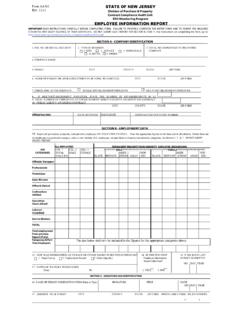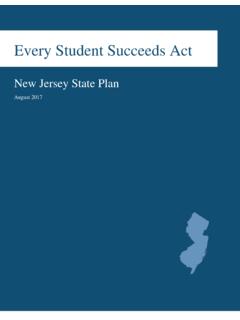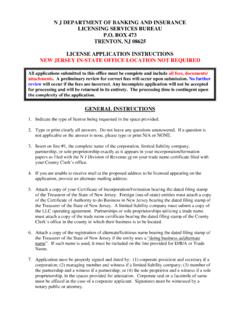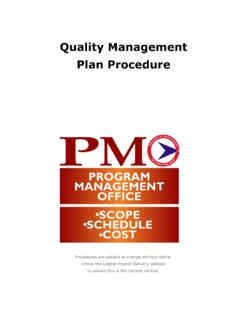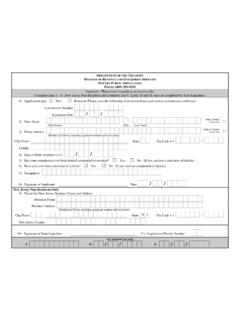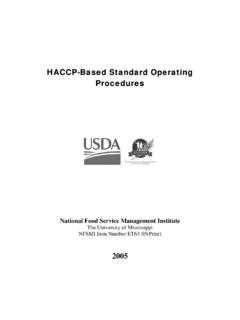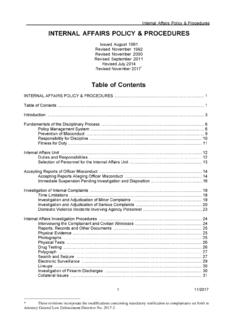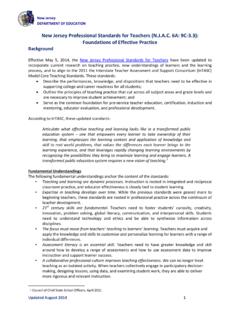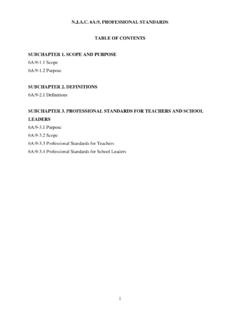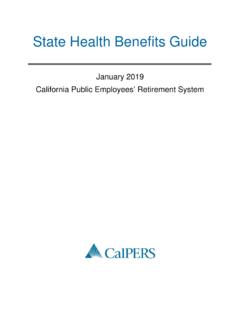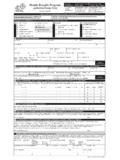Transcription of Dental Plans — Retirees Eligible Members of the State ...
1 Dental Plans RetireesInformation for: Eligible Members of the State health benefits Program (SHBP) and the School Employees health benefits Program (SEHBP)Page 1 March 2019 Fact Sheet #73 The retiree Dental Plans are offered to Retirees eli-gible to enroll in the State health benefits Program (SHBP) or the School Employees health benefits Program (SEHBP). Retirees and their Eligible depen-dents have a choice of two types of Plans : A Dental plan Organization (DPO); or The retiree Dental Expense retiree Dental Plans are available to the follow-ing Eligible Retirees : Any retiree , including survivors, enrolled in a medical plan offered under the Retired Group of the SHBP or SEHBP at the time of retirement.
2 And Any retiree , including survivors of Retirees , eli-gible for enrollment in the Retired Group of the SHBP or SEHBP but who elected to waive their medical coverage because of other SHBP or SEHBP coverage or coverage provided from an-other employer. See the Waiver of Enrollment in Dental Coverage : Duplicate coverage within any New Jersey State -administered Dental plan is not permitted. An individual may be covered as a retiree or as a de-pendent, but not as both a retiree and a dependent. Children may only be covered by one retiree or survivor Eligible for the SHBP or SEHBP will have one opportunity to enroll in a retiree Dental plan when the individual retires or becomes Eligible for enrollment in the Retired Group.
3 Medical plan enrollment is generally offered within 30-60 days of retirement or eligibility for benefits under the Retired Group. Waiver of Enrollment in Dental CoverageThe one-time Dental plan enrollment opportunity can be deferred if you are Eligible but have other group Dental coverage, either as a dependent of a spouse, civil union partner, or same-sex domestic partner, or through your own employment. The retiree or survi-vor may elect to waive enrollment at the time of retire-ment or first offering and retain the right to enroll at a later date.
4 A Cancel/Decline/Waive Retired Coverage Form must be submitted at the time of enrollment in order to be Eligible for later enrollment if you lose the other coverage. You must request enrollment within 60 days from the loss of the other group Dental cov-erage by contacting the New Jersey Division of Pen-sions & benefits (NJDPB). Proof of the other group Dental plan termination must be submitted in the form of a HIPAA Certification of Coverage document or a letter from the employer or Dental administrator, along with the retiree Dental plan COSTSR etirees will pay the full cost of the retiree Dental plan .
5 Coverage is offered with the understanding that the State will bear no costs for the plan . Un-der certain circumstances, a local public employ-er that participates in the SHBP or SEHBP may elect to share the cost of coverage for their retir-ees through the adoption of 1999, c. 48 (Chap-ter 48). The NJDPB will take the monthly premium from the retirement allowance of the retiree . If the re-tirement allowance is not sufficient to cover the cost of the premium, or if the retiree does not receive a retirement allowance, then the NJDPB will bill the re-tiree on a monthly information on the monthly premiums for the Retir-ee Dental Plans , see the rate chart that is available on the NJDPB website: A Dental PLANYour choice of a Dental plan is a personal decision.
6 In deciding whether to enroll and which plan to choose, you should consider: The nature and amount of your anticipated den-tal expenses for the next year; The covered services provided by the retiree Dental Expense plan or a DPO; The differences in out-of-pocket costs for each type of plan ; and The degree of flexibility that you may want in se-lecting a Sheet #73 March 2019 Page 2 Dental Plans RetireesThis fact sheet is a summary and not intended to provide all information. Although every attempt at accuracy is made, it cannot be the Dental plan Comparison chart to compare benefit levels under each type of Dental plan .
7 If you choose a DPO, you must select a dentist who partic-ipates with that particular DPO and who can accept you and your dependents as TIERSTo protect the Plans and enrolled Members against the effect of Retirees joining who have gone years without any Dental treatment, the Plans have three benefit tiers. If you enroll in a retiree Dental plan within 60 days of leaving another group Dental pro-gram in which you were enrolled for a minimum of 12 months, you will be enrolled in the highest reim-bursement tier, Tier 3.
8 If you were not covered in a group Dental program within 60 days of enrolling in a retiree Dental plan or were enrolled in a group Dental program for less than 12 months you will be enrolled in Tier 1. After one year of coverage in Tier 1, you will move to Tier 2. After another year, you will be moved to Tier 3. Once enrolled in Tier 3, the high-est level of reimbursement, you will remain in that tier for as long as you continue to be enrolled. See the retiree Dental Expense plan Reimbursement Tiers SUMMARY retiree Dental plan ORGANIZATIONS (DPOs)The DPOs are companies that contract with a net-work of providers for Dental services.
9 There are sev-eral DPOs participating in the retiree Dental Plans from which you may choose. Participating DPOs are listed in the retiree Dental Plans Member Guide-book, available on our order to receive coverage, you must use provid-ers who participate with the DPO that you select. Be sure you confirm that the dentist or Dental facility you select is taking new patients and participates with the SHBP/SEHBP retiree Dental Plans , since DPOs also service other you use a DPO dentist, diagnostic and pre-ventive services are covered in full.
10 Most other eligi-ble expenses require a copayment. See the Dental plan Comparison chart. Orthodontic services are not covered. If your dentist drops out of the DPO, you must select another dentist from the DPO. If there are none available within 30 miles of your home, or if you move and your DPO cannot provide a dentist within 30 miles of your home, you may change Plans plan Reimbursement TiersThe types of services covered are based on the den-tal tier in which you are currently enrolled: Tier 1 - Diagnostic and Preventive Services Only Tier 2 - Includes Tier 1 Services Plus Restorative Services Tier 3 - Includes Full retiree DPO plan DesignOnce enrolled in Tier 3, you will remain in that tier for as long as you continue to be SUMMARY retiree Dental EXPENSE PLANThe retiree Dental Expense plan is a traditional in-demnity, fee-for-service plan .
